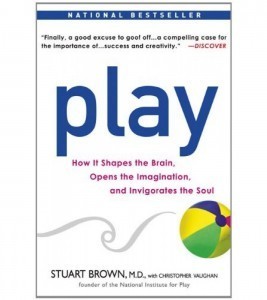Jonalyn Fincher's Blog, page 8
August 27, 2014
Invitation To Tears Read-Along #4
See Read-Along 2
See Read-Along 3
Welcome to week 3, everyone! Today’s post is written by thanatologist and co-author of Invitation to Tears, Aubrie Hills. She delivers a hamper full of good ideas, sources and comfort.
~~~
This week I have covered Chapter 2: “What Our Faith Can (and Cannot) Do”. You can listen here. In the podcast, I tackled an excellent question from Campbell via the blog, discussed some precautions as we talk about suicide and grief, and shared some thoughts on this week’s difficult topic. I must thank you for accepting the challenge to wade through deep waters with us. The more I talk to grieving people who know and trust Jesus, the more I hear questions like:
“Why is it that my church doesn’t get it?”
“When I reach out for support, why does it make me feel guilty?”
“Am I even allowed to be sad/angry/upset/confused”?
What these people are asking is if there is something about their experience that they should feel ashamed of or concerned about. Readers, the answer is emphatically no. Your grief is robust and messy, and you are not isolated in your pain. In this week’s chapter, Jonalyn and I talk about the experiences of Job, Elijah, Elisha, and Jesus as they encountered suffering.
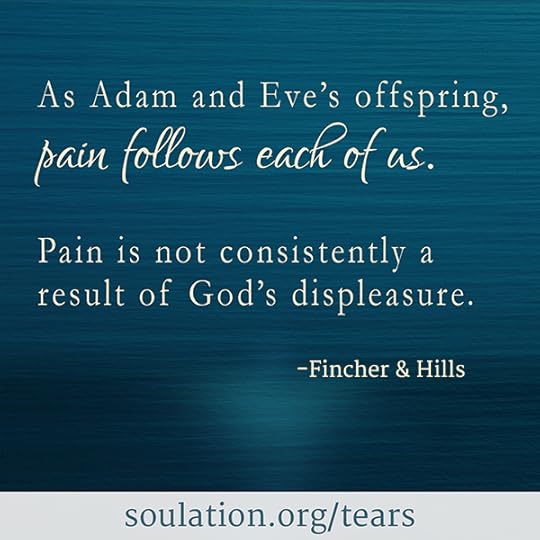 I also shared a selection from Rabbi Earl Grollman’s book Living When a Loved One Has Died. The poem is entitled, “Unsolicited Advice”.
I also shared a selection from Rabbi Earl Grollman’s book Living When a Loved One Has Died. The poem is entitled, “Unsolicited Advice”.
Everyone knows what is best for you. People offer words of consolation:
“I know just how you feel.” (You want to scream: “No you don’t! How can you possibly know what I’m going through?”)
“You are doing so well.” (“Do you know how I feel when you leave?”)
“Your loved one lived to a ripe old age.” (“At any age death is a robber.”)
“Others have lived through it.” (“I’m not concerned about others. At this moment I’m concerned about myself.”)
“It’s God’s will.” (“Then this vindictive and vengeful God must be my enemy.”)
Your heart is breaking – and they offer you clichés. You see, they are frightened, too. They feel threatened and ill at ease. But they are sharing as best they can. Accept their companionship, but you need not take their advice. You may simply say, “Thank you for coming.” And then do what is best for you.
Links conneced to this week’s podcast shou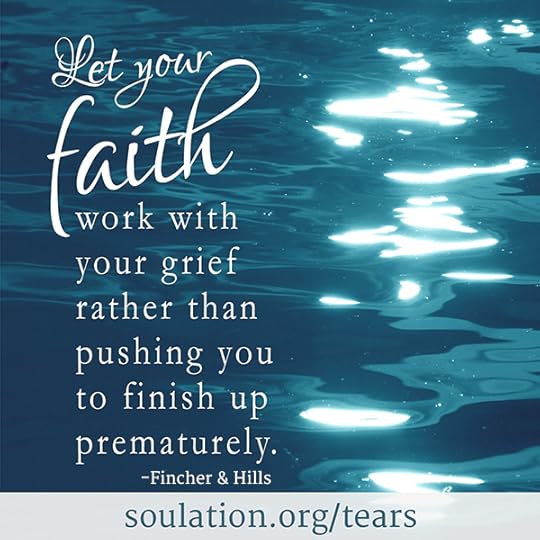 ld you want to explore:
ld you want to explore:
My very favorite book on the sacramental beauty of dying well, Allen Verhey ‘s The Christian Art of Dying: Learning from Jesus
The Innocence Mission’s “I Haven’t Seen this Day Before“
Information about support for suicide loss, understanding suicide, warning signs and a host of helpful information from the American Foundation for Suicide Prevention
An article on How to Tell Friends What You Need from Modernloss.com
This week in the Compass Checkpoints, the movie suggestion is Lars and the Real Girl. Here is a link to an interesting article written by review of the film, highlighting some of the questions that may arise regarding faith, grief, and recalling old losses as fresh loss surfaces
For next week, consider the ways in which your grief story contains a unique ebb and flow. Perhaps this is seen in the way that you have come to understand your loss, how you recount the details to others. Maybe you have found it easier to grieve actively through physical activity, creative projects, or journaling.Think of learning your grief response as good self-care. The more that we notice and become discern our grief language, the better we are at taking care of ourselves and asking for what we need.
As always, please leave comments and questions for next week’s reading, Chapter 3: Learning Your Language of Loss below. Or you can send confidential questions to mail(at)soulation(dot)org. You must have your questions submitted by 1pm MT Friday afternoon.
Here is the iTunes link if you want to subscribe to the podcast.
If you’re reading via email, click here to listen to the podcast.
See Read-Along 1
See Read-Along 2
See Read-Along 3
August 25, 2014
I’m a Feminist and I Wear a Speedo
I’ve invited Christianity Today editorial intern, Samuel Ogles, to take us on a journey into masculinity, feminism, and Speedo bathing suits. For those following our Read-Along (Join us here), Samuel will provide a welcome break from our hard work of grieving well.
I’ve already enjoyed Samuel’s writing on mental illness. I hope you resonate, as I did with the hurdles we must all face in becoming whole and human.
~~~
One year ago I bought a Speedo swimsuit. Even though it’s not a classic Speedo design and actually looks more like a pair of boxer-briefs, it’s safe to say that it’s the most revealing piece of clothing I’ve ever worn. I bought it because I swim laps a couple times a week and it’s comfortable. I bought it because it is 20 times more resistant to chlorine than a regular swimsuit. I bought it because I liked the color. And perhaps most importantly, I bought it because I’m a feminist, and I’m aware that guys who wear speedos are challenging American masculinity.
Last summer I wore that Speedo in front of other people for the first time at a public beach in conservative Holland, Michigan. I got a few playful comments from my friends about how much skin I was showing. I got even more stares from strangers. But something about it felt liberating for me. I think that something was a small step in reclaiming who I am and can choose to be rather than what men are supposed to cover up.
I’m not saying that there aren’t true categories or that gender is meaningless. But I know that I have had a lot of difficulties in my life trying to fit what I was told my gender should look or act or be like. I was taught by myriad outside influences growing up that there was a manly ideal for me. I desperately needed to figure out how to become that Man. But I was never taught to ask if I would be happy or fulfilled once that happened.
I remember being in a school musical in the 4th grade. I loved music and performing, in large part because I was good at it. The 1st graders were putting on a musical called Cockadoodle Dandy, and they needed an older boy to play the title rooster character. I was flattered because I was musical and it felt good to be chosen for the role, but as I walked down the school hallways wearing orange tights, distinctly remember hoping that nobody I really cared about would see me. Wearing tights was a “girl thing,” after all (though people like Henry VIII didn’t think so), and I already felt self-conscious doing something so non-manly as dancing and singing. I remember that feeling 17 years later.
I also remember a day in 7th grade biology when the teacher left the room and the big kid, the bully, decided I was more interesting than our assignment. I remember the emotional (and physical) trauma of getting kicked in the groin—hard—in front of the whole class and being ashamed that I couldn’t hold back the tears. I started crying because of the gut-crashing pain; I kept crying because of the emotional embarrassment. I’d cried in public, and boys weren’t supposed to do that. From then on, I resolved to get a handle on this emotionally-vulnerable-weak-crying-girly thing. I really wanted to become Man-Sam. And you know what? It worked.
By college, I could truthfully say, “I haven’t cried in years.” I came to wear it as a badge of honor. I was never exceptionally athletic or assertive or any number of other adjectives that boys are supposed to attain as they turn into men, but I at least had this emotional dam firmly in place. Like a muscle, I could flex my suppressus emotionus maximus and no tears would reach my eyes.
But then my grandfather died. I’d grown up with him, and we were close. I loved him more than I can say. I desperately wanted to cry the day I got the news or at the funeral or even just remembering him later, but no tears came. I didn’t grow up hearing that tears could be a sign of how strong a love was. Instead, I had successfully built a barrier around those feelings and “weaknesses,” and I couldn’t access them even when I needed to. I had gotten what I wanted and attained a level of Man-Sam. But I didn’t feel like an actualized person. I had shut off a part of my humanity, of who I was, in order to meet some mold that all boys are told to meet to be a man. Yet I didn’t feel like a true man created in the image of God. I felt more like a robot—someone following a scripted program rather than their divine agency. (A recent Salon article poignantly tells how the narrative for men being unemotional, autonomous pillars of unfeeling leaves men both unhealthy and unhappy.)
In the HBO series John Adams, Paul Giamatti (who plays the title character) gives a rousing speech at the Continental Congress urging a declaration of independence. He argues that they are on the eve of revolution and that their unique position should not be squandered. “How few of the human race have ever had an opportunity of choosing a system of government for themselves and their children,” he says. In 2014, we may not be in a unique position to determine how we want to be politically governed, but I do think that we’re in a unique position to determine how we want gender roles to be defined. We need not only be subject to culture; we are able to shape it.
We may be one of the first generations in the history of the world to determine what we want gender roles to look like. Rather than have knee-jerk reactions over change (like when Twitter erupts with backlash after Marvel Comics announces that an entirely fictional superhero character–Thor–will be recast as female) shouldn’t we examine with at least a modicum of self-reflection the ways in which our narratives around gender are limiting?
Swimsuits are a great example. Most people have strong feelings about what is or isn’t appropriate, yet we have a long, well documented history of just how dependent on culture the appropriateness, stylishness, acceptability, and the swimsuit are.
Last year, Jessica Rey’s famous presentation on the perils of bikinis and the need for modesty made quite a splash, and leading Christian voices continue to weigh in on modesty in a larger, secular culture. But Rey’s own presentation admits that “appropriate” swimsuits have run the gamut from itsy-bitsy bikinis to near full-body coverings. Feminism, for me, is the recognition of certain narratives around gender and showing them for what they are: cultural. Sometimes what is culturally permitted is helpful. Sometimes it’s not. Have you ever thought, as I have, that the culture-changing work of feminism is simply dangerous?
 I took that step in college and soon identified that very often our notions of gender roles are much more tied to 1950s advertisements than to divine decree. I guess in small ways, I’m choosing to make a change and choosing how I define manhood for myself. My definition of masculinity still includes plenty of ‘typical’ norms associated with being male, but it’s not limited by them. It has the space for dancing and singing. My masculinity has the space for the emotional freedom to cry. My masculinity has the space for wearing a Speedo, not because I have a “ripped” body (someone recently compared my physique to that of Toy Story’s Woody) but because for me, wearing a Speedo is practical and liberating and makes me feel good about myself. I don’t look to an external ideal on which to model my behavior; I define my own masculinity from within. Christ is a central model for that. Christ never shied from breaking gender norms that were harmful or untrue because he was guided by the interior Spirit. So many of us desperately want to be happy with who we are and to have that same interior source of self-worth. Unfortunately when most of us look in the mirror we only see ourselves in the negative, we see someone who is inadequate when stacked up against external definitions of worth–skinny, muscular, talented, likeable, successful, valuable, “spiritual,” or human. Those external “ideals” are offer anything but a chance to become fully human.
I took that step in college and soon identified that very often our notions of gender roles are much more tied to 1950s advertisements than to divine decree. I guess in small ways, I’m choosing to make a change and choosing how I define manhood for myself. My definition of masculinity still includes plenty of ‘typical’ norms associated with being male, but it’s not limited by them. It has the space for dancing and singing. My masculinity has the space for the emotional freedom to cry. My masculinity has the space for wearing a Speedo, not because I have a “ripped” body (someone recently compared my physique to that of Toy Story’s Woody) but because for me, wearing a Speedo is practical and liberating and makes me feel good about myself. I don’t look to an external ideal on which to model my behavior; I define my own masculinity from within. Christ is a central model for that. Christ never shied from breaking gender norms that were harmful or untrue because he was guided by the interior Spirit. So many of us desperately want to be happy with who we are and to have that same interior source of self-worth. Unfortunately when most of us look in the mirror we only see ourselves in the negative, we see someone who is inadequate when stacked up against external definitions of worth–skinny, muscular, talented, likeable, successful, valuable, “spiritual,” or human. Those external “ideals” are offer anything but a chance to become fully human.
I am not trying to say that the message of feminism is primarily for men; it isn’t. There are so many wonderful and informed female voices speaking on the issue. (Two of my favorites are Sarah Bessey and Rachel Held Evans.) For my part, I can only offer one male, Christian feminist’s perspective. Whether you have taken a side in the Christian debate over being egalitarian or complementarian or not, feminism can speak to you. Feminism doesn’t mean a complete jettison of the concepts of male and female, men and women, but rather a reevaluation of the limits of those concepts. How are they helpful and how are they harmful? How do they shackle us and how do they create the freedom space to be who God created each of us to be? I identify as a feminist not because I have those answers, but because I am determined to ask the questions and find more holistic definitions. And my prayer is that in your more honest moments, you may be ready to ask some of those questions, too.
~~~
Samuel is an ecumenical Christian bridging evangelical and Catholic camps. He is also a student at The Living School for Action and Contemplation located in Albuquerque, New Mexico. He loves flannel, burgers, baby-holding, and finding excuses to laugh. He currently lives in “the evangelical Vatican”–Wheaton, Illinois. Follow Samuel @samuelogles or check out his blog.
August 20, 2014
Invitation to Tears Read-Along #3
See Read-Along #2
Hello Everyone!
In this podcast focusing on last week’s reading (Chapter 1), I’ve focused on one confidential question and a few of my own favorite quotes and practices. You can listen to the 20 minute podcast here.
As you dive into this week’s reading (Chapter 2), be sure to consider the questions on how God and pain, God and suffering are challenging. What questions do you have about this?
This week, we will be reading Chapter 2 “What Our Faith Can and Cannot Do”. For those of you just joining us, feel free to jump in. Podcasts will be available until September 30, 2014. Purchase Invitation to Tears here or email us [mail(at)soulation(dot)org] to buy multiple copies. Silver Circle members receive a free copy and discounts on multiple copies. Share your favorite quotes and questions below.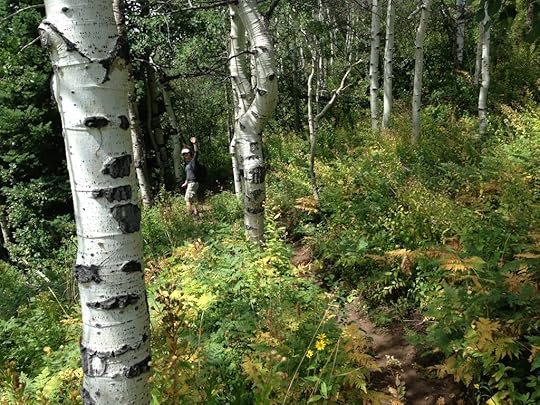
A few additional links and quotes:
“This world is indeed full of peril and in it there are many dark places. But still there is much that is fair. And though in all lands, love is now mingled with grief, it still grows, perhaps, the greater.” J.R.R. Tolkien
“How Does God Feel About Suicide?” at MyFaithHurdle, a forum for question and answers.
“On Death Dignity and Hope” by Kelsey Vandeventer
Soulation’s Four-Part Series on Depression by Susan Lawrence.
“[We must] enter ourselves first of all into the center of our existence and become familiar with the complexities of our inner lives. As soon as we feel home in our own house, discover the dark corners as well as the light spots, the closed doors as well as the drafty rooms, our confusion will evaporate, our anxiety will diminish, and we will become capable of creative work. ***The key word here is articulation.*** Those who can articulate the movements of their inner life, who can give names to their varied experiences, need no longer be victims of themselves, but are able slowly and consistently to remove the obstacles that prevent the spirit from entering. They are able to create space for Him whose heart is greater than theirs, whose eyes see more than theirs, and whose hands can heal more than theirs. This articulation, I believe, is the basis for spiritual leadership of the future, because only they who are able to articulate their own experiences can offer themselves to others as a source of clarification. ” –Henri Nouwen, The Wounded Healer: Ministry in Contemporary Society My thanks to Ryan Thomas Neace for drawing my attention to this quote.
Grief support groups by state.
Ask Live mentoring one-on-one
The Topography of Tears by Rose-Lynn Fisher – an art/photography project observing how different tears take different shapes.
The next podcast is on “What Our Faith Can and Cannot Do” (Chapter 2). Co-author of Invitation to Tears, Aubrie Hills, will answer questions from the comments below. Or you can send confidential questions to mail(at)soulation(dot)org. You must have your questions submitted by 1pm MT Friday afternoon.
Here is the iTunes link if you want to subscribe to the podcast.
If you’re reading via email, click here to listen to the podcast.
Have you tried any compass checkpoints? They will give you music, movies, and exercises to enjoy. Free to share if you watched the movie, listened to the song, practiced an exercise.
We want to hear from you!
See Read-Along #1
See Read-Along #2
August 13, 2014
Invitation to Tears Read-Along #2
Hello Everyone!
I’m delighted that you asked such meaty questions over just the Preface and Introduction reading last week. I was able to consolidate your questions into four themes. You can listen to the 20 minute podcast here.
One of you mentioned how much you liked this line from paragraph 2 of the Introduction to Invitation to Tears, “Jesus of Nazareth never shamed the downcast into cheering up ; he neither rushed through nor avoided tears.” These are good starting words to begin our time to grieve together.
This week, we will be reading Chapter 1 “And So It Begins”. For those of you just joining us, feel free to jump in. Podcasts will be available until September 30, 2014. Purchase Invitation to Tears here or email us for a copy. Share your favorite quotes and questions below.
A few additional links I mention in the podcast:
Does Pain Make Your Stronger? – four minute video
Gnosticism
“Darkened counsel” quote is from Job 38:2
God’s compassion for the broken hearted can be found in Psalm 51:17
Jesus condemning the religious leaders for laying heavy burdens on others comes from Luke 11:46
Grief support groups by state.
Ask Live mentoring one-on-one
The Topography of Tears by Rose-Lynn Fisher
The next podcast is on how grieve begins (Chapter 1). I will answer questions from the comments below. Or you can send confidential questions to mail(at)soulation(dot)org. You must have your questions submitted by 1pm MT Friday afternoon.
Here is the iTunes link if you want to subscribe to the podcast.
If you’re reading via email, click here to listen to the podcast.
As we begin the chapters, the checkpoints will give you music, movies, and exercises to enjoy. Free to share if you watched the movie, listened to the song.
We want to hear from you!
August 6, 2014
Invitation to Tears Read-Along #1
I haven’t seen a year like 2014 since my first year of marriage.
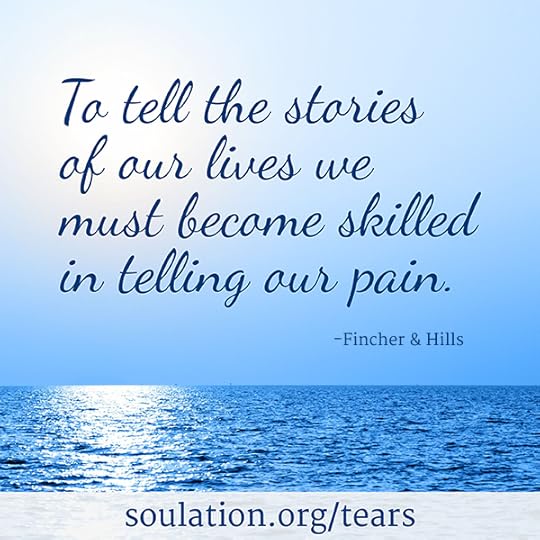 In 2001, I lost my mother-in-law and my husband’s grandpa. Watching my husband pull all his gifts together to speak for both packed services made me amazed as his depth of pain which he faced boldly. I also watched him in private as he felt orphaned. We were only in our twenties, but we had lost his generational line. Most of the time, after the funerals finished, we were alone in our grief. Our friends and many in our family could not relate to the loss. The ones who could sent cards that I still bring out and treasure.
In 2001, I lost my mother-in-law and my husband’s grandpa. Watching my husband pull all his gifts together to speak for both packed services made me amazed as his depth of pain which he faced boldly. I also watched him in private as he felt orphaned. We were only in our twenties, but we had lost his generational line. Most of the time, after the funerals finished, we were alone in our grief. Our friends and many in our family could not relate to the loss. The ones who could sent cards that I still bring out and treasure.
It’s been 11 years, and another year of grief has taken over my normal pattern of living. In 2014, tears have been my food, they’ve been quick to send me to bed with migraines, to ruin speaking and work plans, to destroy my plans I had to cover the evidence. Puffy eyes have been part of my 2014 fashion statement.
This summer, I’ve been treading water and I’m all too ready to climb aboard the little sailboat that can give us all a respite from the storm. Suffering is the ocean, grief is the boat. I want to invite you to practice sailing along with me. Join me for a read-along through my newest book, Invitation to Tears: A Guide to Grieving Well as we finish up our series on uncommon spiritual practices this summer. If you join us, you’ll find the tools to grieve well.
Here’s how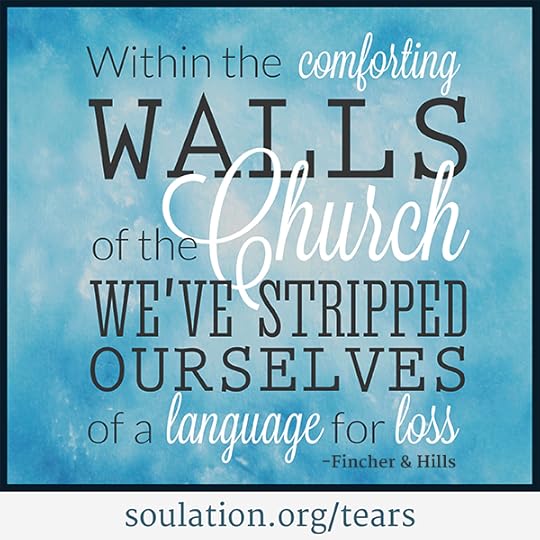 the read-along will work:
the read-along will work:
Each Wednesday I’ll post the reading assignment for the week and invite your questions in response to this chapter. You will have from Wednesday morning until Friday at 1pm (MT) to submit your questions. On Friday afternoon, I will record a podcast responding to questions with the help of my co-author Aubrie Hills. The podcast will release the following Wednesday, along with the next reading assignment. The first podcast will begin next Wednesday and will cover your questions from the Preface and Introduction. You can subscribe to the podcasts here. Please note, the Invitation to Tears read along will only be available until September 30.
READING ASSIGNMENT For Week 1 – Preface and Introduction.
Here are a few supplemental links:
Grief support groups you can join (recommended by thanatologist and co-author, Aubrie Hills).
My favorite poem on acknowledging grief “Never More Will the Wind” by Hilda Doolittle
My tools for grief in 2014 shared in this 4 minute video “Roadblocks to Grieving Well“
Review for Invitation to Tears (in case you’re on the fence)
FAQ
How do I post my question? Post in the comments, or send confidential questions to mail(at)soulation(dot)org (It’s written out this way to prevent spam)
What can I expect in terms of length for each podcast? 10-15 minutes, perfect to listen to as you walk your dog or on your commute. Subscribe here.
What if I don’t want to post a question, but I do want to comment? Post in the comments, but keep in mind our read-along is not intended to function as a support group through grief. You can join a support group here.
I don’t have a copy, yet. Is it too late? Not too late until the end of September. And you can purchase a copy for your e-reader, such as Kindle here
How can I easily invite my friends to join me? Post a picture of you holding the book on Facebook and write something like Alicia Miller Andre did, “Looking forward to diving into Invitation to Tears by Jonalyn Grace Fincher and Aubrie Hills. 4 deaths in my life so far this year. Anyone want to join me for the Read-Along with Jonalyn [link to Facebook event]?” Or by forwarding this post, or our reviews.
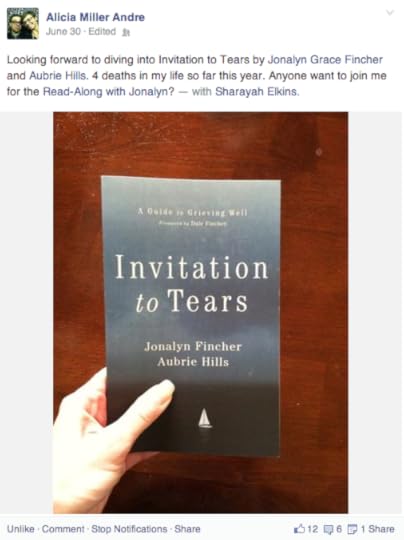
I haven’t experienced a death of a person, but I have lost something (a relationship, a childhood, a dream, an opportunity, etc), will this Read-Along apply to me? Yes, it will.
I’m not sure I can read every chapter, can I still listen in on the podcasts? Please do!
I need a support group, is that what this is? No, but we can refer you to one at HelloGrief or ModernLoss.
The first podcast will begin next Wednesday and will cover your questions from the Preface and Introduction.
Here is the iTunes link if you want to subscribe to the podcast. It normally takes a couple of hours for the podcast to upload to iTunes so it might be early Monday morning.
If you’re reading via email, click here to listen to the podcast.
I’m happy to answer questions from the comments!
A few questions to consider this first week:
 Some of the most painful moments of our life can feel even more lonely when we hear well-intended, but barren words of comfort Have you ever been suffering, from a death, a broken relationship, emotional slapping, a death, a move, a destroyed vocation and heard something like . . .”Don’t be so upset about it, God knows how to fix it.” , “God just needed another angel in heaven.”, “Are you still upset about that? Maybe it’s time to let go and let God.” What other false words of comfort have you heard?
Some of the most painful moments of our life can feel even more lonely when we hear well-intended, but barren words of comfort Have you ever been suffering, from a death, a broken relationship, emotional slapping, a death, a move, a destroyed vocation and heard something like . . .”Don’t be so upset about it, God knows how to fix it.” , “God just needed another angel in heaven.”, “Are you still upset about that? Maybe it’s time to let go and let God.” What other false words of comfort have you heard?Why do we rush ourselves through grief instead of inviting ourselves to sail into grief? What is holding you back from hoisting your sails?
What grief will you be focusing on during this read-along?
Looking forward to your thoughts and questions. Let’s discover how we can face our pain together.
July 30, 2014
The Spiritual Practice of Friendship (not just Chemistry)
It doesn’t take much book knowledge to pick up on chemistry between two people. There’s this lightening-y (my compliments to Ratatouille) moment when you feel in sync, like they get you and time slows (or speeds up) long enough to notice each other. Like the first time a guy did a double-take at me and then came over to talk. Like the time I met F, who got all my jokes and could ask questions that kept me thinking. Or the time I met S, who wanted to explore what Christianity, psychology and friendship brought to our lives.
Chemistry has fooled me several times to think I had got a good friendship going. A good word for this hope is “potential.” F had potential to be a close, close friend. But chemistry wasn’t enough.
Chemistry is not intimacy. And intimacy is what’s lacking in most friendships. Intimacy doesn’t require that we shop in the “intimates” section, it is not just the stuff that happens when Marge tells Homer she wants to be “intimate”. Intimacy is what we all want when we say “I wish they cared enough to ask me about last weekend.” Intimacy is impossible without small, seemingly silly acts of trust. As Jon Gottmaan explains “Trust is built on small moments.” And I’d add it’s destroyed in small moments, too.
Without these small moments, we can’t figure out who is trustworthy enough for us to build intimacy. We don’t want to be close and personal with just any fun person.
So how do you tell who has the ability to be close with you? Look for the small moments. These will add or remove marbles of trust to the friendship jar, creating marble-jar friends (my compliments to Brene Brown for this metaphor, see Daring Greatly p 48-49 where she says “Trust is build one marble at a time”). I’ll take my friendship with my husband, Dale, as an example.
When we were first getting to know each other (not dating, yet), Dale shipped me a package. It was the final semester at UVA and he was living in Los Angeles. The bubble-wrapped insides held
two Orange Creme sodas
a CD (yes it was that long ago) of Rich Mullins’ “A Liturgy, A Legacy, and a Ragamuffin Band“
The package was heavy (glass and liquid) therefore more expensive than a letter AND it included one of the nearest and dearest songwriters to Dale’s life. He dropped a marble into the friendship jar between us. Fast-forward several years when we’re married, Dale opts to call my grandparents by their (somewhat unusual) names, even in public. And who doesn’t have grandparents with funny, endearing names? Another marble. Recently, I wanted to practice composting in the winters, so Dale researched (his spiritual gift) a sub-zero compost device. The whole mess and smell of composting is not Dale’s sweet spot, it’s mine, but he found it, bought it, assembled it. Another marble. This summer, I’ve had some challenges with friendships. Dale knew about them and has noticed how sad I’ve been. He asks about how I’m doing, and he lets me co-opt our evening hours (we spend time together most evenings at 10pm) to rehash how I feel. Marbles plunk, plunk, plunk.
Dale’s marble jar is very full.
Unlike my friendship with Dale, there are other friendships, where I have good chemistry… maybe even more “natural” (by which I mean easily accessible, ready-made, on the table) chemistry than Dale and I had at the beginning. I’ve already mentioned F. I’ve watched marbles disappear from our friendship jar, and again, through small gestures of disconnection.
She promised to help me move my pots one Saturday and never showed, forgetting to explain the reason or check in later.
When I’ve been sick, she doesn’t remember me or pray for me. It’s like I don’t exist until I call or show up healthy again.
She doesn’t ask me, “What would you want?” anymore. It’s like my desires are too big or too scary to hear.
After I share my secrets, she doesn’t share hers.
She feels a million miles away when I ask her what she wants.
So, our chemistry flattened. I felt a lingering betrayal, which is a dramatic, scary word, but appropriate, too. F had betrayed me by disengaging. It was impossible for me to avoid the message, I was unworthy of her engagement. We never grew the intimacy we needed to sustain the trust to even address these missing marbles. And the friendship fizzled. It took me months to grieve the loss of what could have been.
And yet, the disengagement of F is something I’ve done to other friends. I think of B, who I promised to take out to a special dinner once she visited me. I never did. In fact, I completely forgot. I began to back away from her questions of what was wrong, I stopped sharing my secrets with her. I have no doubt that I felt a million miles away from her when she decided to leave me off the invitation list to her wedding.
This can happen between same-sex friends, but it can also happen between husband and wife, opposite-sex friends, sisters, adult child and parents, co-workers. The marble jar used to be full, but then some marbles went missing. Trust left slowly with each marble removed; intimacy has disappeared.
How do you rebuild your friendship? I want to share a little recipe, but first, we must ask this question, do we want to fight for this friendship? Is it worth fighting for? What irreplaceable, precious role does this friend play in our life? I think of A and how she is the most curious friend I have. I never want to lose her curiosity in my life. When it gets tough, I can come back to this reason, it carries me (much like a wedding vow) to drop marbles into our jar of trust, it will carry me through moments when the chemistry is gone. Intimacy is powerful like that, but it is a practice not a privilege. And it must be reciprocated. You don’t get friends for life because you want them, you get friends for life because you’ve practiced engaging with them and they’ve practiced engaging with you.
My Recipe for Rebuilding a Friendship
Start small, choose carefully. You cannot rebuild more than 1-2 friendships at a time (and I’m speaking as an extrovert). Write these friends names down in your journal and begin to brainstorm what you know and love about them.
Stop making excuses that you’re too busy to remember someone else’s important life events. Call or text them the day of or during to let them know you remember what’s happening to them on this day.
Refuse to hide your secrets. Ask yourself, “When was the last time I shared a scary moment with this friend?” If they’ve shared secrets with you, how are you reciprocating? If not, how are you initiating re-building trust? E.g. “For the first day of school, I was so afraid to drop my son off at school. I wondered if you felt that way?”
Know their birthday, anniversary, and other life-altering events (kids’ birthdays, parents’ death days, miscarriage anniversaries) and let them know YOU know why these days matter.
Offer to read a book together, choose one you can talk about. Mark in your book the passages that were special to your friend.
If you haven’t heard from them in awhile, text, call and share something vulnerable and honest from your life. It doesn’t have to be big. e.g. “Today I saw the rain and it made me sad and moody for some reason. Thought you’d appreciate this pic.”
Cultivate curiosity whenever you’re together.
What about from you life? How do you rebuild your friendships?
July 23, 2014
Courting Curiosity
I just finished one of those longer-ish arguments with my husband, the ones that tempt me to set up camp on the moral high ground.
The old mulberry bush of defensiveness and tears. And why do we keep going around and around the rutted track? The main reason is that we are more curious about each other than most men and women.
Curiosity Rescued Me
This summer we’re going beyond the typical Christian ways to grow. A summer of my spiritual disciplines, and in case you’re just joining us, click through for practicing courage, self-care, play, self-awareness, feasting. Curiosity also makes the list.
We are curious cats, Dale and I, we don’t just “leave it” when there’s an unasked question lingering around. We’ve personally witnessed how curiosity leads to peaceful family dinners (eventually), buoyant Saturdays where we want each other’s company, and hugging each other until we relax. We argue about this one or other (petty? sure!) argument because we know getting THIS argument complete and finished will put us back together whole. We won’t be guarding the place that we were hurt if we know our hurt will be cared for. And that’s the root of curious: care. Even if the mulberry bush is one of the required pit stops along the way, we march around and around in arguments because eventually curiosity pulls us out and beyond.
A friend reminds us about how we once argued in front of him about my uncomfortable shoes and Dale leaving me in the rain too long. He was trapped in our car, subjected to listening to another argument. After we had cleared it all up, he asked, “When you guys are (ahem) discussing like that, do you want me to give you some space?”
We’ve gotten better at practicing arguing in private, trusting our friendship to handle a few more hours of missing each other before we settle this matter, but we still argue.
Today’s argument tried to seduce me to avoid slogging through the “When you said this, I thought you meant this. What did you mean?” and instead just assume a few things about “the way men are”. Things every wife feels tempted to assume at one time or another
men are dense
men are insensitive
men do not care to work things out
men are inadequate
Some books might suggest landing on the solution that the opposite sex is vastly different, a mystery, a puzzle, another species. But the spiritual practice of curiosity rescued me from this idea.
What Curiosity Gives
Curiosity is at core an inquisitiveness into something you don’t know. It drives scientific research as well as the research into the soul of the person beside you. From the Latin curiosus meaning “careful, diligent, curious,” you might even think of cura, the same root for care, which is why curiosity cannot be faked longterm. It takes too much energy, as you might have noticed when your conversation partner keeps stealing glances at someone else she’d rather talk to.
Curiosity relies on the deeper trust that treasure awaits. Just keep digging.
Curiosity is destroyed as soon as you think “I can read him/her like a book.” You and I change, even as we read this line. No person is a finished book. Humans are not so static, we are as organic as a beet, as prone to rot and flourish depending on the season.
Curiosity is the belief that my husband has something new to offer me every single day. Every painful argument become a window into his soul and a revelation of mine. You might imagine the view is unflattering at least half the time. When I talk to Dale, I get to discover him. You think I’d have him figured out by now? No way, and it’s not because I’m just inattentive. Dale is constantly growing, so just today, I unearthed these treasures:
When Dale senses that I’m disappointed in him, he’d rather take full blame than face my displeasure.
His history with disapproval (watch that story) shoots his defensiveness through the roof when I hold a disapproving card in my hand.
He is as sensitive to being inadequate as I am, I just happen to enunciate this fear more often and more forcibly.
He will work out any argument if he senses that I really care to know and care for him.
In other words, Dale is not from Mars.
If I want to make myself a safe home to others, I must wonder what keeps them quiet when I speak. I must ask questions and not contradict their experience of me. And by courting their confidence, I learn about myself as well. For someone who’s often come up short in patience, curiosity can get me very close to this fruit of the Spirit. In a strangely satisfying way, curiosity courts patience.

Muskrat spotted!
Courting and Stalking
Annie Dillard explains it best,
In summer, I stalk. The creatures I seek have several senses and free will; it becomes apparent that they do not wish to be seen. When I stalk this way I take my stand on a bridge and wait, emptied . . . It used to bother me . . I just could not bear to lose so much dignity that I would completely alter my whole way of being for a muskrat. So I would move or look around or scratch my nose, and no muskrats, would show, leaving me alone with my dignity for days on end, until I decided that it was worth my while to learn–from the muskrats themselves–how to stalk. (Pilgrim at Tinker Creek as quoted in Loving to Know by Esther Lightcap Meek).
We meet another human soul, from the intimacy of our marriage, to the stranger at the Farmer’s Market, only by accepting them on their terms, not ours. And since, as most curious folks know, our questions can come across as stalking or inappropriate or just nosy, we cannot simply blaze in with questions. I have had enough run-ins with friends (and strangers) to know I come across rather insistent upon getting my questions answered. A characteristic best suited for journalistic fields and not casual friendship, so how do we channel the curiosity in ourselves? The answer is not to bury this talent.
This summer, I’ve taken my curiosity on a new trek. I’m watching those deft people (usually decades older than me) who can ask questions without being nosy, who can let an awkward moment pass with a slight laugh and re-steering of conversation. These old souls court knowledge, rather than demand it. Take note, dear soul. Curiosity is only a gift if we notice the flash of fear and wait for openness again. Knowing another requires we bind themselves to them, to love, honor, and obey the signs they give us that they are not ready, they are not safe, not yet, not now.
Until I care more about sighting that wild animal: the true soul of a human, I will have to care about making myself quiet enough to listen and watch.
Curiosity can take me there.
~~~
Dive into the rabbit hole: Read books and permit a footnote about another author to steal you away to another book, and another book. That’s how Daring Greatly lead me to Play.
Refuse to say to yourself, “Well, that’s the way they always are.” Instead, ask “What makes them choose this way to be over any other way?”
Ask yourself and anyone close to you to share stories from their earliest memories.
Meditate in your heart on your bed and be still. Curiosity seekers always find pieces that need time to fit together.
Read poetry. If this sounds intimidating, start with a “A Smile to Remember” and ask the questions this poem demands.
Trust that if we dig deeper, gold is beneath. This is the promise of loving a God of love who made creatures like him. All will be made well, all matter of things will be made well, and we can look for the work of that wellness in each person.
July 16, 2014
The Spiritual Practice of Courage
This week it’s time to practice the lion-hearted virtue of courage. We all have a bit of the cowardly lion in us, even those of us Type A extroverts. No matter your bravado or cool veneer, we all want to tuck our tail between our legs when we face those wickedy witchy moments. I want to share some of those moments with you, and a few ways I prepare for them.
Courage is one of the spiritual practices that make us more human, it’s one of those disciplines that all followers of Jesus get to cultivate. In fact, I’m not sure you can follow Jesus very far without it.
The more people I meet, through Emerald Cities, through speaking, traveling, and writing, the more I realize that most people have very good justification, even life stories to explain why they believe what they do. People on both sides can explain themselves, and prove that their lives are in line with what they see as “truth”. We often make friends who see the same truth as we do. But, to become more like God, to become more fully ourselves, we need more than our picnic basket of truths. We must cultivate the courage to find out if our truth, our justifications for how we live are whole and true to ourselves and this world.
You cannot do that without courage.
Finding light and truth means more than following what I’ve always thought the Bible teaches, or my church or my community teaches. It means inviting the God of truth to speak into my incredibly smooth self deceptions. As Nikos Kazantazaki’s blackbird says to Adam in The Last Temptation of Christ, “The doors of heaven and hell are adjacent and identical; both green, both beautiful. Take care, Adam. Take care.” Jesus puts it another way, “For the gate is small and the way is narrow that leads to life, and there are few who find it.” (Matthew 7:14).
Every time Jesus talked with a person, he invited them to do something risky, something their friends or family would not have completely approved. I think it’s fair to assume that we will also need incredible courage to walk with Jesus.
Courage is Not the Opposite of Fear
Courage does not mean we stop being afraid. This week, I’ve scheduled another debate with atheist and friend, Emily Heist Moss. We’re going to talk about abortion. Perhaps you can imagine how this makes me more than a little nervous. Let me re-state that and share my kitchen-table self.
I’m afraid.
I’m afraid I’ll make pro-life Christians look dumb, I’m afraid I won’t hear her arguments carefully, I’m afraid I’ll interrupt and be annoying, I’m afraid I will not represent my thoughts clearly. I’m also afraid my arguments may not hold up to reason and that her truth may be more convincing. Even writing this is making my palms sweat.
But this fear doesn’t mean I’m a coward, because the debate is happening today, right about the time you may be reading this. Cowardice is not feeling fear, cowardice is letting fear plan my day. Courage is praying something like Brené Brown’s prayer of vulnerability: “Give me the courage to show up and let myself be seen.”
Courage often means fear is present. Courage sometimes requires that we work with and face the present fear. And this is why Christians have a good shot at practicing courage often and well. If we want to be godly, like the God we serve, than we cannot help but notice our God is courageous. Jesus is proof that God had the courage to show up and let himself be seen. Jesus practiced courage, he also felt fear.
Courage was sweating it out in Gethsemane before the dawn, and Golgotha. Jesus reminds me that I can practice courage because he, as the uber-human, the visible connection between humanity and deity, also had to practice courage. And no matter the outcome of this Emerald City abortion debate, I know ahead of time that this is a chance for me to ask God to make me more courageous.
Courage with our Children
My son recently asked me about how the baby gets in the womb. I wanted to push pause on that question. He is only four!
Instead I explained that sperm (which Daddy has) and eggs (that Mommy has) get together in Mommy’s womb and then found this amazing video that looks like a WebCam is strapped to the sperm as it finds the egg. The video begins at ejaculation (yes, I just wrote that word), so everything happens “inside.” Ever since watching, our son has become enamored of the amazing sperm’s trip and the cells multiplication. Fortunately, most people think he’s talking about the whale.
For those of you who think I’m crazy, I thought of you before I fearfully explained this to my son. But that I told him proves to me that I can be brave and scared at the same time.
I share this because I think courage is contagious. And I think having the birds and the bees talk in response to children’s curiosity (and in small, clear segments) is better than getting the whole load of bricks in one striking conversation. I’m also influenced by other courageous women in this decision, women like Katey Zeh, an advocate for women’s reproductive health worldwide.
I first noted Katey’s work when I read her essay in Talking Taboo: American Christian Women Get Frank About Faith, where she wrote:
One of our biggest omissions of our churches occurs when we fail to discuss sexuality in all its fullness, to have the complex discussions with children, youth, and adults about what healthy sexuality at every life stage looks like . . . By remaining silent, we have sent a strong message that issues of sexuality are of little importance to the church and to God.”
The virtue of courage propelled this statement and courage is at work as we try to practice it. I was blown away by how well she articulates Biblical grounds for a right to privacy here.
Katey works hard to change the silence of the church in her work as a reproductive justice advocate in faith communities as the director of the United Methodist Church’s organization, Healthy Families, Healthy Planet (@UMCHealthyFams), building support for maternal health and international family planning. In an easily misunderstood field, Katey works to end the epidemic of maternal mortality worldwide by lobbying lawmakers (yep, in Washington D.C.) to consider the need for funding to end needless deaths.
I wanted to share a 3 minute snippet of my Emerald City interview with Katey. Here, she shares how Hagar (Abraham’s concubine) gives her a new lens on God’s capacity to build courage into women who are at the end of their rope. Watch as she draws from Hagar’s story.
Modern Lessons from Hagar (if you cannot view video go here)
Katey explains more of her involvement with worldwide birth control as I ask her about government funding, abortion, and Planned Parenthood in this hour long Emerald City interview. All fourteen segments are available for purchase here. Learn more by following @Ktzeh or read her essays on Hagar, Mary, or in Talking Taboo: American Christian Women Get Frank About Faith. 
Grow courage
Whether we’re talking birds and bees with our kids or having a spiritaul conversation with someone who intimidates us, or facing a trying friendship, here are three practical ways to practice building courage:
Find a fabulous prayer. I like this one from St. Teresa “Let nothing disturb you; nothing frighten you. All things are passing. God never changes. Patience obtains all things. Nothing is wanting to her who possesses God. God alone suffices.”
Memorize a mantra. I borrowed one from my friend Susan Cunningham that goes like this “I can be brave and scared at the same time.” I practice saying it when my palms sweat.
Set up triage, expecting the work of building courage to take strength out of you. I get fragile and shaky when I’m facing my fears. Recently, I had a week where I knew beforehand that my body, my soul, my values were going to be questioned and disrespected. So, I set up a triage with three friends before the week began. First, I asked my friend J to be on call for me to ask him to quickly remind me why he values me. Second, I asked my friend A to be on call to be able to listen and process what I was feeling. Third, I asked my friend H to let me debrief with her the day after the ordeal ended. Fourth, I set up my charged iPad and good books in my bedroom so I could find refuge whenever I needed a break. This courage stuff is not a place to “wing it.”
July 9, 2014
Plays Well With Others
I recently learned that some churches in Scotland locked their playgrounds on Sunday, swing sets and teeter totters being too frivolous for the seriousness of the Lord’s day. I want to ask these elders if they lock up their crosswords, as well.
Are play and seriousness opposites. My four-year-old will claim a seriousness to his play, and the illustrious C.S. Lewis agrees (“The Weight of Glory”), because play matters.
This summer, I’m sharing my most practiced spiritual disciplines, the places I invite God to work and change me. So far we’ve talked about self-care, self-awareness, body image and feasting. This week, I want to pause on that attribute, playfulness, that even God practiced when he swung the stars high enough to sing together.
Scriptures are full of play, but our sermons are not.
“Let the rivers clap their hands, Let the mountains sing together for joy.” Psalm 98: 8
“The lines have fallen to me in pleasant places; Indeed, my heritage is beautiful to me . . . You will make known to me the path of life; In Your presence is fullness of joy. In Your right hand there are pleasures forever.” Psalm 16: 6 & 11
“For you will go out with joy And be led forth with peace; The mountains and the hills will break forth into shouts of joy before you, And all the trees of the field will clap their hands.” Isaiah 55: 12

In this scene from Dirty Dancing, they’re playing opposites, Baby is teaching Johnny.
“There is an appointed time for everything . . . a time to laugh, a time to dance, a time to embrace.” Ecclesiastes 3: 4-5
So I saw that there is nothing better for a person than to enjoy their work, because that is their lot.For who can bring them to see what will happen after them? Ecclesiastes 3: 22
“And wine which makes man’s heart glad, So that he may make his face glisten with oil, And food which sustains man’s heart.” Psalm 104: 15
“Draw me after you and let us run together! The king has brought me into his chambers.” “We will rejoice in you and be glad; We will extol your love more than wine. Rightly do they love you.” Song of Solomon 1:4
And I could, but I won’t quote at length the erotic play that we get in full featured metaphors in Song of Solomon. See 4: 7-16.
 When Jesus says that he comes to give us abundant life, how could he possibly exclude playfulness? How do you enjoy abundance without play? How do you drink wine with gladness of heart without play? How do you turn water into wine without a playful twinkle in your eye? How do you verbally spar with the Canaanite woman, the Samaritan woman, even play hide and seek with his two disciples on the road to Emmaus. How long did he wait until revealing himself? Haven’t you noticed, we follow a playful Messiah. And he knew how to play well with others.
When Jesus says that he comes to give us abundant life, how could he possibly exclude playfulness? How do you enjoy abundance without play? How do you drink wine with gladness of heart without play? How do you turn water into wine without a playful twinkle in your eye? How do you verbally spar with the Canaanite woman, the Samaritan woman, even play hide and seek with his two disciples on the road to Emmaus. How long did he wait until revealing himself? Haven’t you noticed, we follow a playful Messiah. And he knew how to play well with others.
But, despite these wonderful passage of Scripture, examples of the Son of God, we have sinned and grown old and our Father is younger than we (or so says G. K. Chesterton in Orthodoxy, see the essay “The Ethics of Elfland” a must read on this topic of play). We are afraid to play because it’s frivolous.
It’s what kids do, it’s not for adults and it’s not practical, efficient, worthwhile (unless it makes you work harder, so we take a 10 minute break so we can finish this post–for instance). Given the capacity God put in us to enjoy things (try searching “joy” or “blessed” in Scripture), it seems a bit bizarre that we are hungry to save people without really enjoying this “saved life.”
To what are we saving people? A life of more work, more evangelizing, more genuflecting, more church attending? Why should someone follow Jesus? What kinds of things will they get in abundance?
For one thing, following Jesus means you become more fully alive, more like yourself, the one with a specific play personality. Following Jesus frees us to learn to play, for it is those who played well in this life from Amelia Earhart to Albert Einstein who end up creating, inventing, discovering, directing, storytelling with a buoyancy that whisked us into their masterpiece.
Last year, Soulation’s writers spent a month writing about play, I joined in and admitted something then, that I no longer believe. I used to think that I played awkwardly, like a 12-year-old trying to slow dance.
Since then, I’ve read Play How It Shapes the Brain, Opens the Imagination, and Invigorates the Soul by Stuart Brown, a pioneer in play research.
Philosopher that I am, I felt a mini-Hallelujah Chorus bubbling up as I landed on this list explaining what counts as play. It will be a template for those of you who, like me, have been so indoctrinated in working well we’ve forgotten what counts as play for us.
The seven properties of play, as defined by Stuart Brown, official Play Expert, and Founder of the National Institute of Play (yes, this is a real thing).
Apparently purposeless (done for it’s own sake)
Voluntary
Inherently attractive
Freedom from time
Diminished consciousness of self
Improvisational potential
Continuation desire
 Brown unpacks these in his book, which I do recommend (he even explains why calling someone a “player” is a misnomer).
Brown unpacks these in his book, which I do recommend (he even explains why calling someone a “player” is a misnomer).
When I’m pretending to be a pilot, at the behest of my son, and flying Ripslinger in repetitive circles around our living room, I sense the seconds stretch out into months (Where, oh WHERE, is Dale so I can pawn off Ripslinger?), an increased consciousness of myself (Is this REALLY the way an engine is supposed to sound?), the plummet of creativity (What else can I do with this plane?), and the end of desire to play well with my son.
Suffice it to say, flying Planes around the room is not play for me. Watching Planes is.
Just like there are different personalities, there are different play styles. And you might find you don’t fit into just one. I’ve summarized each play style that Brown explains in more detail. See if you recognize yours.
The Explorer – physical, emotional, or mental searching for a new experience.
The Competitor – solitary or social playing to win. You love keeping score whether it’s money or points.
The Director – born organizers, instigators of excursions, events, parties for the stage of life.
The Collector – to somehow have the most, the best, the most interesting, from coins to meteor showers.
The Artist/Creator – making anything, meals, art, furniture, clothes, for beauty, function or goofiness.
The Storyteller – imagination is their realm, storytelling their art, which they can bring to almost anything.
My son lands in the storyteller play style which is why today when he helped me with laundry, I found him making a nest for his baby birds with my whites in the bedroom. I lean closer to Artist/Creator. My husband is a Collector. So when we went shopping yesterday (which involves looking at the same thing for 1 hour and not buying anything), I requested an hour to watercolor beforehand. Halfway through the day, my son and I played a pick-up game of soccer. We all played yesterday.
Brown gave me some very practical reasons for adults to play. I’ve written them in a neat summary which I’m happy to share for those who ask in the comments.
But, perhaps the most important lesson of playfulness is that it’s valuable for its own sake. Take a look at a tree for instance, God could’ve created some green slop to do all the things that a tree does. But he made the aspen and the oak and the fir instead.
So now, back to those elders in Scotland locking up the swing sets. I say that their crossword puzzles can be to them what swingsets would be to my son, good occasion for rejoicing, highly appropriate, nope, necessary on the Lord’s day. That is, if you like crossword puzzles, for, as Brown says, if you don’t like crossword puzzles, they won’t help your memory. The brain lights up when we play.
Too many of us do playful thing because someone else told us it would be fun.
To regain play in your life you need to take a journey back into the past . . . this can be done by simply sitting and remembering (and often visualizing) something you did in the past that gave you the sense of unfettered pleasure, of time suspended, of total involvement, of wanting to do this thing again and again. The memory of that emotion is going to be the life raft that keeps you from drowning.
Like my son says when we play chase, “Let’s do that for a lot of times.” He is like our God who says upon ever sunset, “Do it again, sun, again.”
For more, watch Stuart Brown’s TED talk with an opening story that drew me right in about a hungry polar bear and a chained husky dog.
http://www.ted.com/talks/stuart_brown...
July 2, 2014
Favorite Fourth of July Recipes
It’s a summer of spirituality. So far we’ve talked about the disciplines of self-care, self-awareness, and body image (with Savvy’s post on hair cuts). This week I’m going to share my favorite author and recipes so we can better practice the lavishness of feasting.
And what better time than the Fourth of July?
This Independence Day, my family will be a-going picnicking under the fireworks of Steamboat Springs, Colorado. Our little town has been voted the #1 place to be on the 4th and for good reason. The 111th Annual Cowboy’s Roundup Days with a packed out morning parade and an evening under the exploding plumes has become part of our family tradition.
Last year, we were hosting GREEN Gathering for those who wanted to go deeper in recovery from spiritual abuse. We celebrated our own independence from spiritual damage as we feasted, talked, hiked, and watched the millions of lights explode above us.
This year, we’ll picnic with close friends whose son, Sawyer together with our Finn, will find no shortage of mischievous ways to enjoy the show.
I’m planning on packing a picnic dinner for us all. Below, you’ll find some of our favorite recipes, watermelon chilled soup, goat cheese dip, baby back ribs…. for summer time celebrations.
But first, a few quotes from my favorite guide to feasting, Josef Pieper. I share these for those of us who want some meat to the reason behind all the work of holidays. For those of us who don’t know why we celebrate, or what a celebration really is, take note from one of the great Catholic philosophers of the 20th century.
Just the highlights in six quotes:
Festivals are a day of non-working, of rest from work, of non-calculation, of wealth, of superfluity, of waste, but essentially they are a day of people enjoying themselves. The reason for joy may be encountered in a thousand concrete forms (For me they’d include snowshoing or sailing, painting, reading, cooking, watching a movie and then talking late into the night with friends). Nevertheless it consists always of the same thing: the possession or receiving of that which one loves.
A festival is an assent to life . . . the well-spring of a thousand legitimate occasions for festivity, whether the immediate event be the coming of spring or of a baby’s first tooth.
And since
There are no purely profane festivals.
Real festivity cannot be restricted to any one particular sphere of life, neither to the religious nor to any other. It seizes and permeates all dimensions of existence . . . Wherever festivity can vent itself in all its possible forms, an event is produced which leaves no zone of life, worldly or spiritual, untouched.
And shocking though it may be, most of modern humans are un-festival. This leads Pieper to call on Roger Caillois’ observation that:
Today it is not vacations, but war that fulfills the functions of the great festivals. In war, all the attributes of festivals may be found: the most drastic conversation and consumption of energies, the eruption of stored force, the merging of the individual in the totality, the squandering of resources ordinarily carefully husbanded, the wild breakdown of inhibitions.
Therefore, I end with Pieper’s quote of Frederick Nietzsche’s posthumous writings, “The trick is not to arrange a festival, but to find people who can enjoy it.”
– from “What is a Feast?”
Nietzsche’s words prove that feasting is in danger because we lack the sort of company to celebrate a feast. Who do you feast with? Who can you celebrate a day of possessing what you love? Who are your festival companions?
Today, I’m more convinced of the treasure within those few friend I can cherish and sit beside in festivals, not people I collapse beside because finally I’m free of work and it’s time to have a beer, but kindred spirits who been present with me even when life felt crowded and the tyranny of the urgent tempted them to forget. But they chose to be near.
That’s another reason to celebrate.

The show is just beginning on Howelson Hill
Four of My Favorite Fourth Recipes
Goat Cheese Appetizer
Total time: 5 minutes
Goat Cheese (room temperature) mounded so it looks like an igloo.
Mix (or spread over the top) one of your favorite toppers:
honey with cracked pepper
raspberry chipotle sauce
strawberry, boysenberry, fig, peach and ginger, blueberry jam
Garnish with sliced chives, surround with crackers.
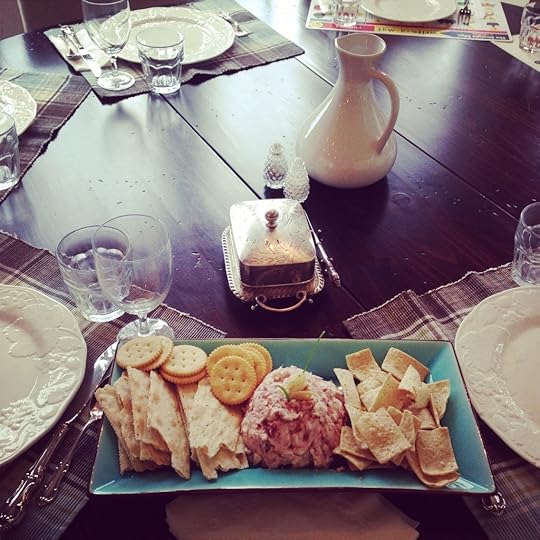
Goat cheese with strawberry jam and crackers
Pasta Primavera
My favorite way to enjoy sweet, glazed vegetable. Very easy to tupperware and carry to a picnic
Adapted from Giada De Laurentiis’ Everyday Italian
Total time: 30 min
Substitute Gluten Free pasta for GF option
6 carrots, peeled
2 medium zucchini
2 yellow summer squash
1 yellow bell pepper
1 red bell pepper
1 onion, thinly sliced
1/4 cup olive oil
1 tablespoon dried Italian herbs
2 teaspoons kosher salt, plus more to taste
1 teaspoon fresh ground pepper, plus more to taste
1 pound drive bow-tie pasta
15 cherry tomatoes, halved
3/4 cup shredded Parmesan cheese
Preheat oven to 450 degrees F. Cut the carrots, zucchini, squash, and bell peppers into thin 2-inch-long strips. Go thicker on softer vegetables to ensure an even roast.
On a heavy baking sheet toss the vegetable strips, onion, oil, dried herbs, and 2 teasponssns each of salt and pepper. Distribute half on another baking sheets. Arrange the vegetables evenly over both sheets.
Bake, stirring after the first 10 minutes, until the carrots are tender and the other vegetables begin to brown, about 20 minutes total.
Make pasta, but when draining reserve 1 cup of the cooking liquid.
In a large bowl, toss the pasta with the cooked vegetables and add the cherry tomatoes and enough of the reserved cooking liquid to moisten. Season with more salt and pepper to taste.
Spring with Parmesan cheese and enjoy!
Memphis-Style Dry Baby Back Ribs
adapted from Dr. BBQ’s Slow Fire
Total time: 4 1/2 hours
3 full slabs of baby back ribs (about 2 pounds each)
1/4 cup of BBQ Rub #1
1/4 cup of BBQ Rub #2
3 tablespoons apple juice
BBQ Rub #1 = 1/2 cup sugar in the raw, 1/2 cup kosher salt, 3 T chili powder, 3 T paprika, 1 t garlic powder, 1 t onion powder, 1/2 t black pepper, 1/2 t lemon pepper, 1/2 t ground coffee, 1/4 t cayenne pepper. Combine all ingredients. Rub can be stored in an airtight container in a cool place for up to 6 months.
BBQ Rub #2 = 1/2 cup packed light brown sugar, 1/3 cup kosher slat, 1/4 cup paprika, 1 T chili powder, 2 t garlic powder, 1 t sugar in the raw, 1 t onion powder, 1 t black pepper, 1 t dried basil, 1/2 t ground cumin, 1/2 t turmeric, 1/4 t cayenne pepper
Peel the membrane off the back of the ribs and trim excess fat.
In a small bowl mix BBQ Rub #1 and 1/4 cup BBQ Rub #2. Sprinkle the mixture on the ribs using 2/3 for the meat side and 1/3 for the bone side. Refrigerate for 30 minutes.
Prepare cooker to cook indirectly at 235 degrees F using a combination of 1/3 hickory and 2/3 cherry wood for smoke flavor. Put the ribs in the cooker, bone-side down. Cook the ribs for 2 hours, then flip and cook for 30 minutes longer, until the ribs are nicely browned.
Lay out three double-thick sheets of heavy-duty aluminum foil. lay one slab on each piece of foil. Close up the rib packages, pressing out as much air as possible. Do not seal the packages tightly; they need to breathe.
Return to the cooker for 1 hour, or until tender. Check for doneness with a toothpick, which should go in and out very easily. Transfer ribs to a sheet pan. Remove from the foil and brush the meaty side with the apple juice. Sprinkle 1 T of BBQ Rub #2 over the meaty side of each slab of ribs. Cut each slab into three pieces to serve.
Minted Watermelon Soup
adapted from The Cozy Home Cookbook
Total Time: 15 minutes
1 medium watermelon, seeded and chopped
1 3/4 cup plain whole milk yogurt (don’t skimp on the fat content here)
Garnish: chilled watermelon balls and sprigs of fresh mint
Be sure all seeds are out of watermelon, then use mixer or food processor to blend watermelon until mixture equals about 6 cups. Blend with yogurt and chill 2-3 hours. Spoon into fluted glasses and garnish. Serves 6.
If you try any of my favorites out, would you let me know?
And next week, look for some new idea on the practice of play.
Until then, happy Independence Day!
Jonalyn
P.S. Between BBQ and fireworks, take a moment to zip over to Dale Fincher’s Independence day announcement at FreeAtLast.me. This next SoulGym might just be for you. Hope to see you there!
Jonalyn Fincher's Blog
- Jonalyn Fincher's profile
- 9 followers




